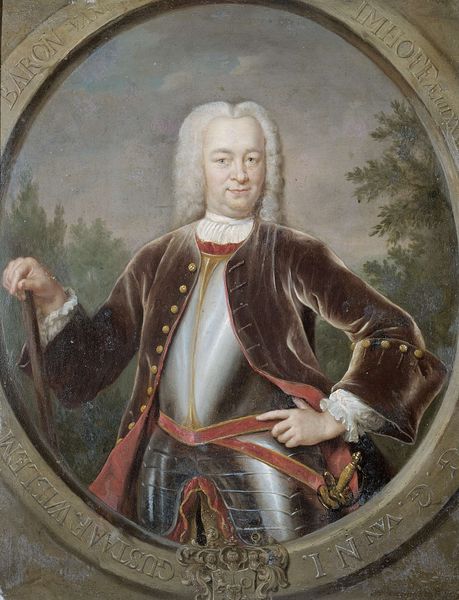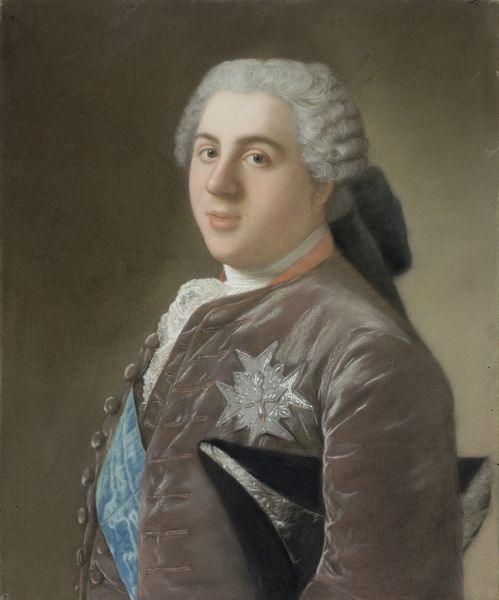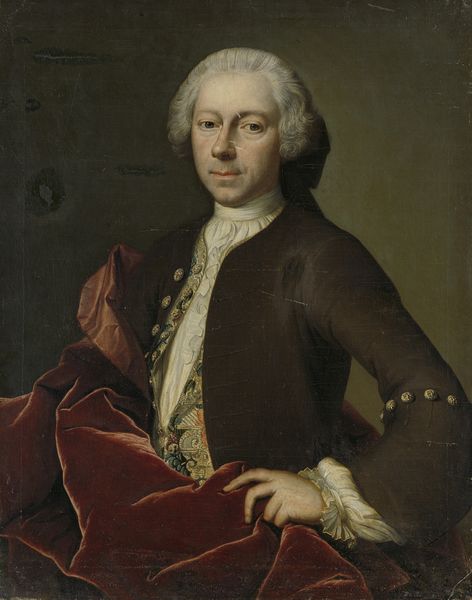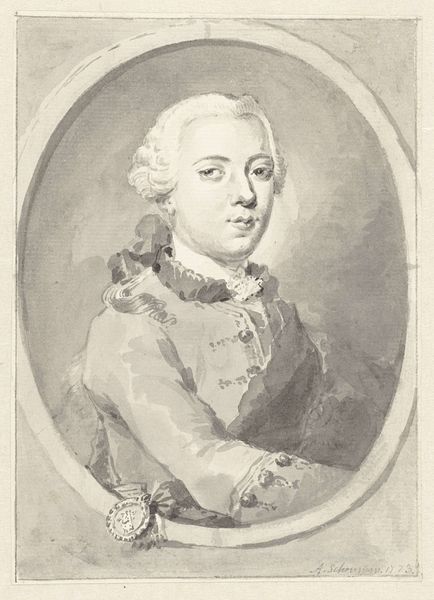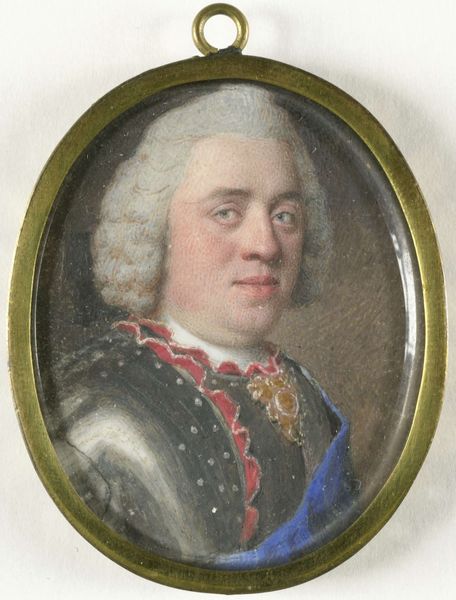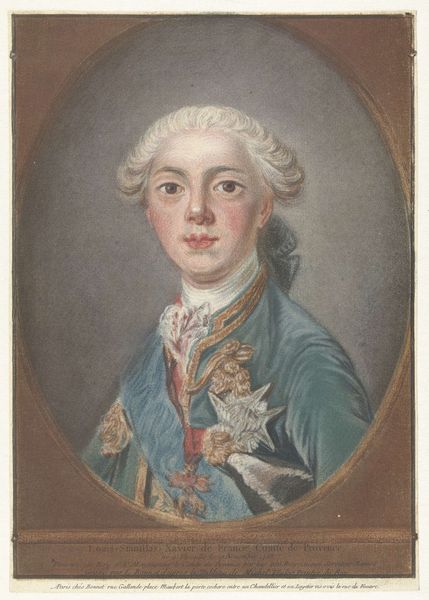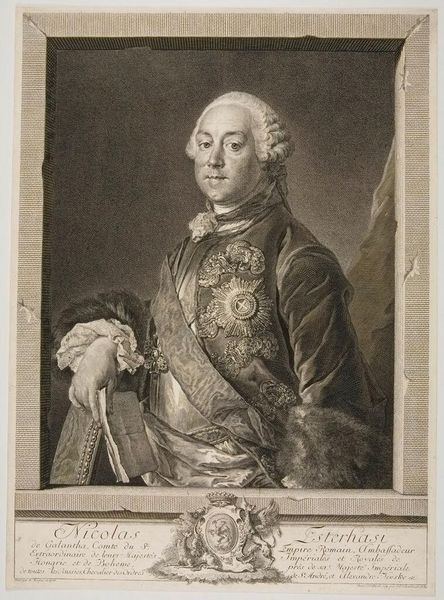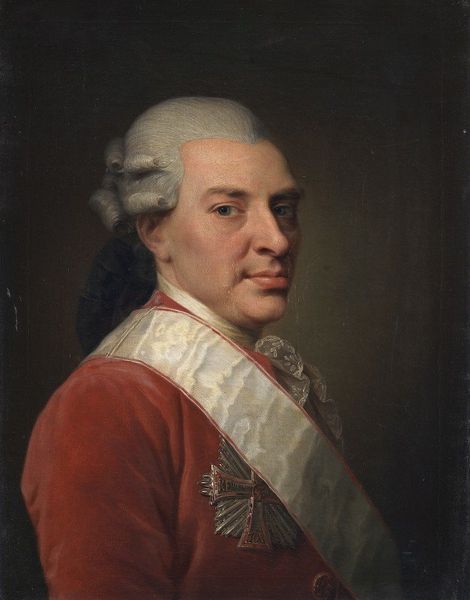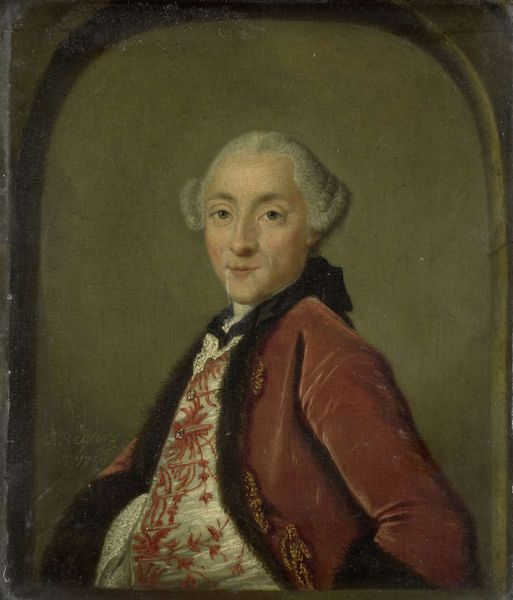
oil-paint
#
portrait
#
baroque
#
oil-paint
#
oil painting
#
genre-painting
Dimensions: height 81 cm, width 69.5 cm, thickness 3.5 cm, height 90 cm, width 78 cm, depth 10 cm
Copyright: Rijks Museum: Open Domain
Editor: This is a portrait of William IV, Prince of Orange, from around 1745, an oil painting now at the Rijksmuseum, though the artist is unknown. It's striking how the regal blue sash cuts across the ornate armour. What meaning do you draw from the overall presentation? Curator: I see a fascinating attempt to craft and solidify an image of power, but perhaps revealing a certain insecurity as well. Look at the elements chosen: the armour isn’t just practical protection, but a deeply ingrained symbol of strength, of martial prowess harking back to classical heroes. And the blue sash - doesn’t it feel almost… theatrical? Like a costume piece rather than an intrinsic part of his being? Editor: That's a great point. The armour feels more symbolic than functional. Is it about conveying legitimacy during a specific time? Curator: Precisely! The weight of dynastic expectation. The portrait aims to visually reinforce William’s claim to power by tying him to a pre-existing symbolic framework, attempting to associate him with ideas of stability, heritage, and leadership, while navigating potential anxieties related to this inheritance. He’s almost using cultural memory as a kind of political fortification. Editor: So the symbols function almost like... political advertising? Creating an image for public consumption? Curator: Absolutely. The painting, in essence, is propaganda – a visual encoding of specific messages meant to resonate with viewers on both conscious and subconscious levels, perpetuating the idea of unbroken lineage. It reflects how rulers used imagery to define their roles and justify their authority. What I wonder is, does the heavy reliance on symbolism reinforce his authority, or ironically undermine it by suggesting that authority needs such bolstering? Editor: That's fascinating. I hadn't considered the possible doubt implicit in all the display. It definitely gives me a lot to think about. Curator: Indeed. Symbols rarely stand alone. Their true power lies in their relationship to the beliefs, fears, and aspirations of the society that views them.
Comments
No comments
Be the first to comment and join the conversation on the ultimate creative platform.

